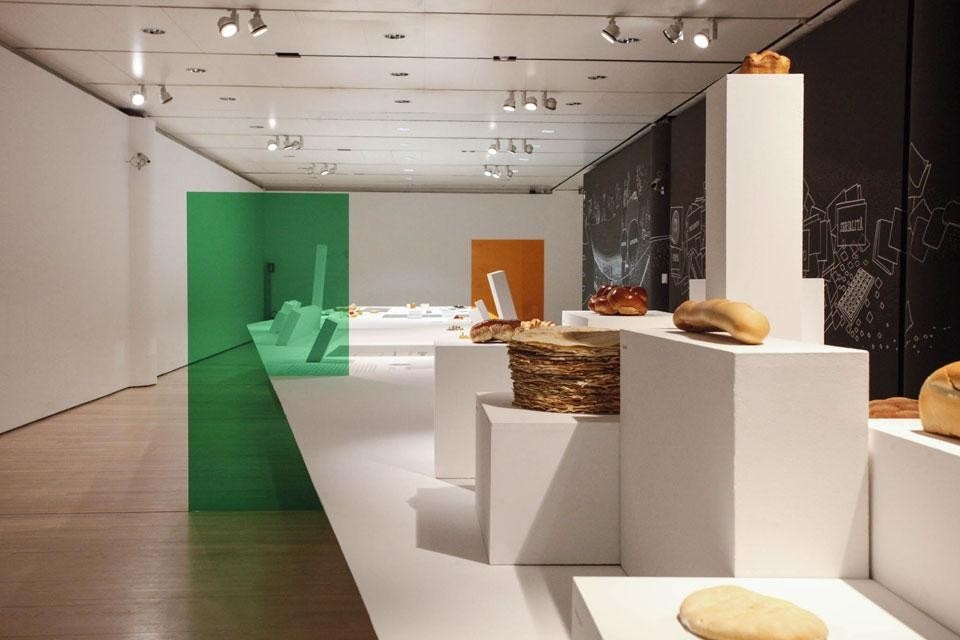Food is ever more present in the online world and cooking is enjoying a moment of new and widespread popularity. Perhaps the reason lies in a renewed interest in what one eats and how one eats it; but can design also contribute to improving people's diets? The first discerning and complete investigation into the design of food appears at the MART museum in Rovereto, where Cristiana Collu has recently taken the helm, with the exhibition Food Project. The Shape of Taste, curated by Beppe Finessi, an exhibition project that represents an attempt, through a display of over 200 engaging objects, to stimulate in the visitor a different kind of aesthetic and sensory perception: a selection of works "to eat with the eyes, taste with one's gaze and perceive with all the senses" is how the museum describes it. The media has been reporting on good food for years now, exploring every technique and application, and the parallel with design appears increasingly apt: mass-produced food or limited-editions?
![Top and above: <em>Progetto cibo. La forma del gusto</em> ["Food project. The shape of taste"] installation view at MART, Rovereto Top and above: <em>Progetto cibo. La forma del gusto</em> ["Food project. The shape of taste"] installation view at MART, Rovereto](/content/dam/domusweb/en/design/2013/02/25/food-project-the-shape-of-taste/big_406841_7068_02_Panoramica_senza-titolo21.jpg.foto.rmedium.jpg)
![<em>Progetto cibo. La forma del gusto</em> ["Food project. The shape of taste"] installation view at MART, Rovereto <em>Progetto cibo. La forma del gusto</em> ["Food project. The shape of taste"] installation view at MART, Rovereto](/content/dam/domusweb/en/design/2013/02/25/food-project-the-shape-of-taste/big_406841_5214_03_MG_00621.jpg.foto.rmedium.jpg)
The exhibition starts however with an orange, as an homage to the great Bruno Munari, who refers to this fruit treating it as if it were a project realised on paper by an industrial designer. Elsewhere, Munari wrote an heartfelt essay in listing all the utensils used in classic western cooking compared to the use of just wooden sticks for eastern countries: who knows how the geography of utensils changes?
If design should help us live better without resorting to the insect gratin by Susana Soares, what could be a more important issue to address if not our daily bread? What could be more edible than the everyday use of things?
![<em>Progetto cibo. La forma del gusto</em> ["Food project. The shape of taste"] installation view at MART, Rovereto <em>Progetto cibo. La forma del gusto</em> ["Food project. The shape of taste"] installation view at MART, Rovereto](/content/dam/domusweb/en/design/2013/02/25/food-project-the-shape-of-taste/big_406841_8144_04_MG_00551.jpg.foto.rmedium.jpg)
![<em>Progetto cibo. La forma del gusto</em> ["Food project. The shape of taste"] installation view at MART, Rovereto <em>Progetto cibo. La forma del gusto</em> ["Food project. The shape of taste"] installation view at MART, Rovereto](/content/dam/domusweb/en/design/2013/02/25/food-project-the-shape-of-taste/big_406841_2279_05_MG_10521.jpg.foto.rmedium.jpg)
The food revolution has brought with it new professions: we now have food designers. One of them is Spanish designer Marti Guixé who presents his Menu Degustació. Guixé has been a real revolutionary and trailblazer in this field for over ten years. His projects include the 2001 Fish Snack System, the 1997 Techno Tapas and the 1997 Edible Pen, made from a liquorice stick.
![<em>Progetto cibo. La forma del gusto</em> ["Food project. The shape of taste"] installation view at MART, Rovereto <em>Progetto cibo. La forma del gusto</em> ["Food project. The shape of taste"] installation view at MART, Rovereto](/content/dam/domusweb/en/design/2013/02/25/food-project-the-shape-of-taste/big_406841_5941_06_MG_1798.jpg.foto.rmedium.jpg)
A number of projects place the spotlight on disturbing aspects of the future of food like Dominic Wilcox's 2009 Genetically Modified Egg, an egg with a square base that stands up on its own, or the decorated yolk in Matt Brown's Printed Egg. If design should help us live better without resorting to the insect gratin by Susana Soares, what could be a more important issue to address if not our daily bread? What could be more edible than the everyday use of things? Maria Cristina Didero
Through 2 June 2013
Progetto Cibo. La forma del gusto ["Food project. The shape of taste"]
MART
Corso Bettini 43, Rovereto




